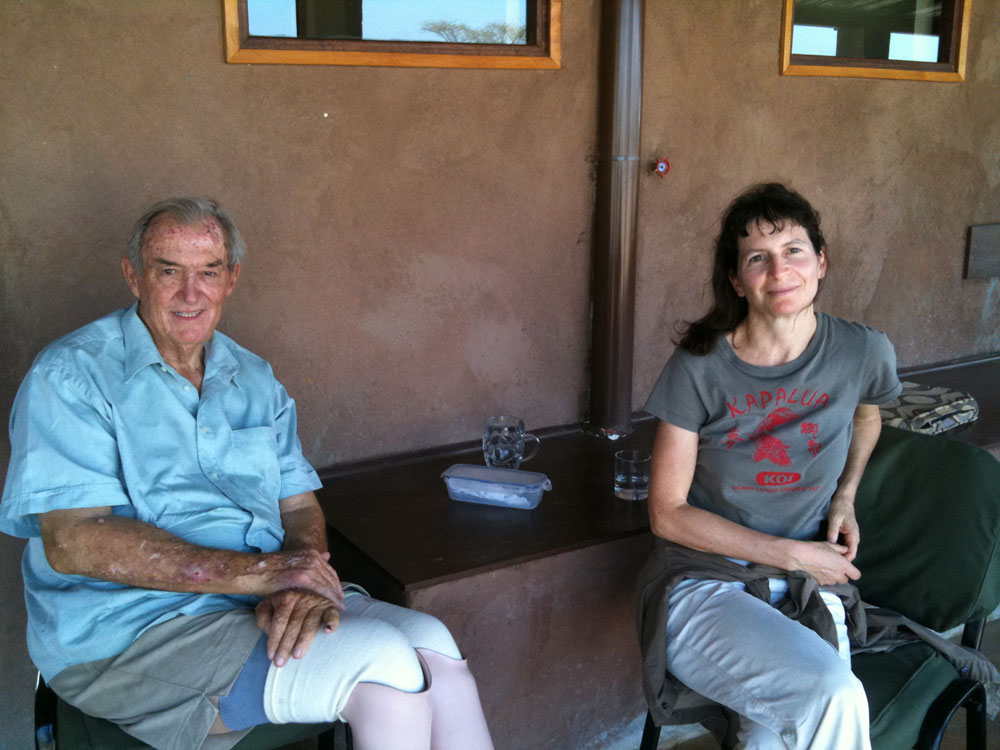My lunch with Richard by Ellen Miller

Ellen Miller works on the fossil evidence for primate evolution and currently conducts fieldwork in Miocene deposits in the Turkana Basin.
One morning in spring 2008, I was in my office at Wake Forest University when I got a call from Richard Leakey. He was in the nearby town of Greensboro for a talk that evening, and he asked if I was free for lunch. A few weeks earlier I had seen Meave Leakey at the biological anthropology meetings, and she told me that Richard was building a research facility at Ileret, Kenya, to provide logistical support for fieldwork in the Turkana Basin. This was great news because I imagined there would be a lot of construction equipment at Ileret, and I asked Meave if she could send a bulldozer to the fossil site of Buluk—about 3 h from Ileret, where we had found a rich bone deposit eroding out from under a big hill, and I wanted the hill taken down. She said, “You’ll have to talk to Richard.”
As I sat down across the table from Richard, he skipped the formalities and began with, “Meave tells me you want a bulldozer!” I explained about the hill, and that as an American, the easiest way to move a lot of dirt was with a bulldozer. Richard responded, “Well I’m Kenyan, and when I think about moving a lot of dirt I think about manpower.” Then the questions began in earnest. How much dirt? Was the hill as wide as the restaurant? Was it higher than the ceiling?How much higher? Richard was gauging the scale and scope of the request, and he was taking the measure of me. When lunch ended, we had a handshake deal. I would do the work; Richard would help with logistics.
That first hour with Richard previewed several lessons I was going to learn in time, including how fortunate I was to have crossed through Richard’s orbit and to have his support. Richard took a chance on me, although I suspected this may have been due to Meave’s influence. She had an interest in the Buluk primates and had published an important paper on the monkeys. Since then, I learned that I am one of the countless people Richard has helped (Figure 2).
This was also my first insight into how singularly capable Richard was. No one else could have conceived of and built the Turkana Basin Institute (TBI), which today maintains two well‐appointed field research stations, one at Ileret on the east side, and one at Turkwel on the west. Richard spent his entire life in the bush and he knew how to get things done. Many people have recognized Richard’s visionary qualities, not just with TBI, but also as the head of Kenya Wildlife Service, among other important posts he held. What was also evident was that his leadership was fueled by his heart, and because of that Richard was incorruptible.
Our lunch that day emphasized what a true son of Kenya Richard was. He was serious about engaging with the talent around him and determined to use Kenyan manpower because it created jobs. The TBI field stations were built manually by local employees to keep the wages in the community. When it came time to take the hill down at Buluk, Richard sat with me and sketched out a plan. When I did not have enough money to run a full field season, Richard came up with funds to cover expenses, including the wages for manpower. When enough of the hill had been taken down to expose the bone bed, that same crew turned into arguably the finest, most skilled team of excavators on the planet. As Richard knew they would.
Richard Leakey was sometimes irascible, especially if I had done something foolish. But he was also genuinely kind. And all these attributes were married to a memory an elephant would envy. As was the case with the camembert and apples he once saved for me at Ileret, because he remembered I liked them.
Read the entire article In Memoriam: Richard Erskine Frere Leakey (1944 – 2022)
